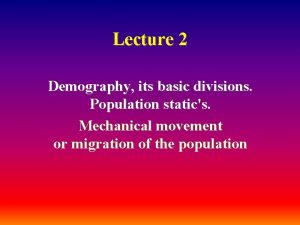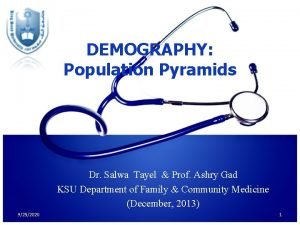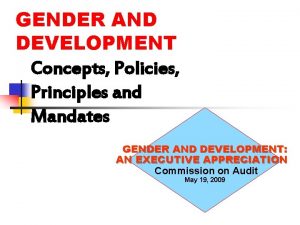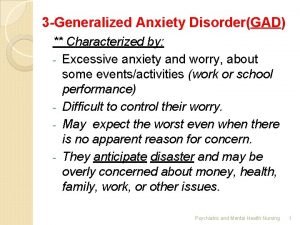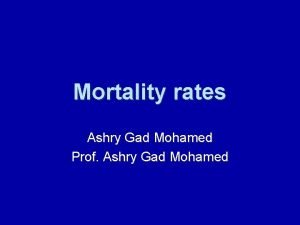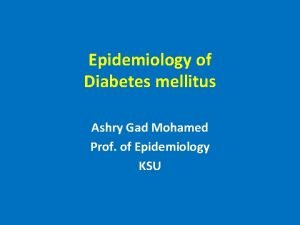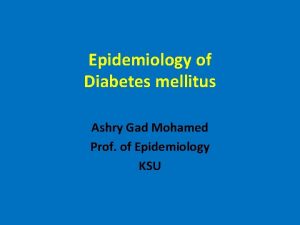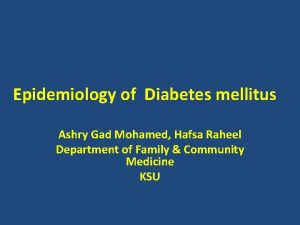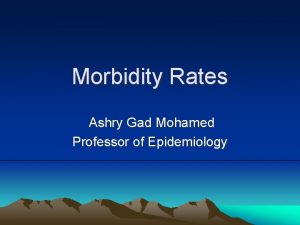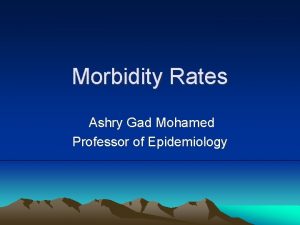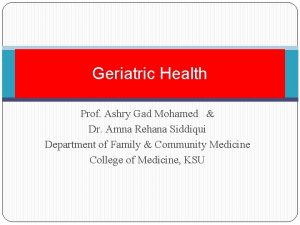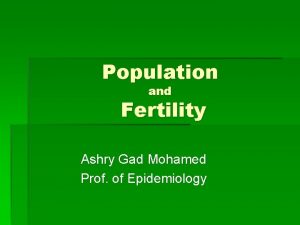Demography Ashry Gad Mohamed Prof of Epidemiology Science


















- Slides: 18

Demography Ashry Gad Mohamed Prof. of Epidemiology

• Science studies population from various aspects: • Size • Composition • Distribution

Population size • Number of all persons in the community. • Census • Estimated population

Census • A process of enumeration of all persons in the community. • Time: 10 Years • Procedures: Enumeration Demographic Socioeconomic

Methods 1 - De Jure Counting individuals at their legal residence regardless of their physical presence. Factual Expensive

2 -De Facto Counting individuals wherever they actually are on day of census. Easier Economic

Estimation Methods 1 -Natural increase (Number of live births – Number of deaths) added to last census population. No migration in or out.

2 -Arthmatic mean Two consecutive censuses Mean annual increase Population = last census +(Mean annual increase X number of years). Example: 1410 30000 1420 40000 Annual increase = 10000/10 =1000 1429 40000 + (9 X 1000) = 49000

3 - Geometric method Most accurate Special equation

• Graphical method

Saudi population

Population • 28, 161, 417 note: includes 5, 576, 076 nonnationals (July 2008 est. )


Age structure • 0 -14 years: 38. 1% (male 5, 469, 641/female 5, 258, 508) • 15 -64 years: 59. 5% (male 9, 467, 325/female 7, 284, 077) • 65 years and over: 2. 4% (male 355, 173/female 326, 693) (2008 est. )

Median age • total: 21. 5 years • male: 22. 9 years • female: 19. 7 years (2008 est. )

Sex ratio • at birth: 1. 05 male(s)/female • under 15 years: 1. 04 male(s)/female • 15 -64 years: 1. 3 male(s)/female • 65 years and over: 1. 09 male(s)/female • total population: 1. 19 male(s)/female (2008 est. )

Life expectancy at birth • total population: 76. 09 years • male: 74. 04 years • female: 78. 25 years (2008 est. )

• Dependency Ratio Total Dependency Ratio= <15 + >60 years / 15 -60 years Young Dependency Ratio = <15 / 15 -60 years. Elderly Dependency Ratio= >60 years / 15 -60 years
 Amna nisafani
Amna nisafani Static demography
Static demography Cso business demography
Cso business demography Elements of demography
Elements of demography Ap human geography models and theories
Ap human geography models and theories Population demography definition
Population demography definition Difference between a sample and a population
Difference between a sample and a population Components of demography
Components of demography Slash and burn agriculture synonym
Slash and burn agriculture synonym How to answer what is your favorite subject
How to answer what is your favorite subject Wid wad and gad
Wid wad and gad Gender and development concepts
Gender and development concepts Thank you for listening
Thank you for listening Budgetü
Budgetü Gad accounting
Gad accounting Ego-syntonic
Ego-syntonic Hydroxyzine vs xanax
Hydroxyzine vs xanax Anticorpi anti vgkc
Anticorpi anti vgkc Wid wad gad
Wid wad gad

